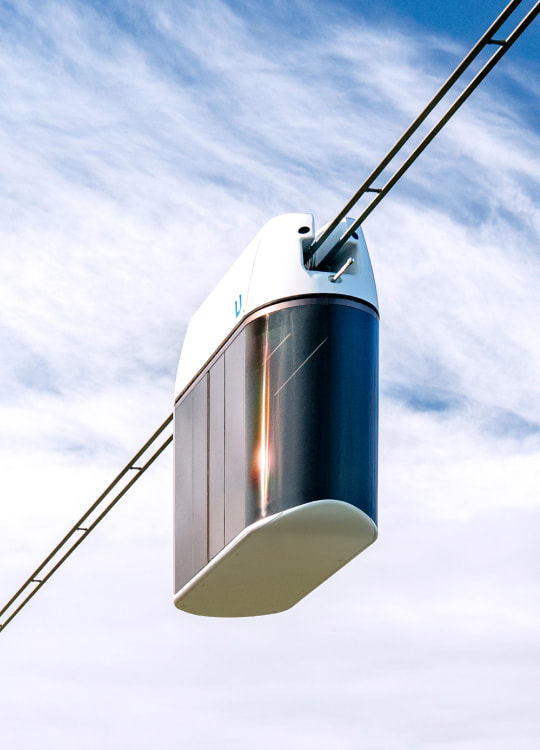Technology


uST Transport and Infrastructure Solutions based on the Unitsky String Technologies Inc.’s patented engineering and know-how are characterized by high efficiency and minimal impact on the environment, as well as unprecedented reliability and safety in the transportation of passengers and cargo
Operating principle
Transport and Infrastructure Solutions by Unitsky String Technologies Inc. are based on the technology of creating pre-stressed transport overpasses of a new generation, where the string rail is a key element. Such a rail is a steel or composite beam containing in its core a bundle of wires (strings) pre-stressed by tension and equipped with a rail head, along which passenger and cargo electric vehicles on steel wheels – uPods – move automatically at speeds up to 150 km/h (up to 500 km/h in the future)
Steel wheel
String rail
Steel wheel
Steel rail head
String (a bundle of pre-stressed by tension steel cords)
Special filler
Rail body


- 1. Steel wheel
- 2. Steel rail head
- 3. String (a bundle of pre-stressed by tension steel cords)
- 4. Special filler
- 5. Rail body
The string rail track structure replicates the hanging bridge combining all of its primary components
String rail
Support saddle
Rail body
(stiffening beam)
Suspension
(special filler)
String
(load-bearing cable)
Support
20 cm


20 cm
- 1. Rail body (stiffening beam)
- 2. Suspension (special filler)
- 3. Support saddle
- 4. String (load-bearing cable)
- 5. Support
Suspension bridge
Load-bearing cable
Suspension
Support saddle
Stiffening beam
Support
15 m


15 m
- 1. Stiffening beam
- 2. Suspension
- 3. Support saddle
- 4. Load-bearing cable
- 5. Support
The horizontal load in the overpass (about a thousand tons, which, for example, is two orders of magnitude less than in hanging bridges) is taken by anchoring structures installed at a distance of up to 10 kilometers from each other. Supporting towers take up little vertical load, which eliminates the need to make them so massive and install them as often as in conventional elevated motor and rail roads or monorail systems. The unsupported spans can be up to 3 km long. This is important when crossing water barriers, passing over gorges, areas with residential or industrial buildings, lines of energy and transport communications, etc.

